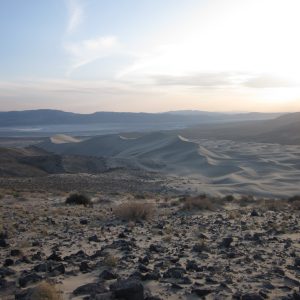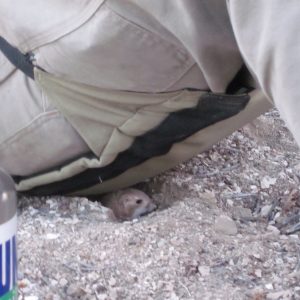My internship is in Carson City, NV. A common misconception of Nevada seems to be that it is a flat, endless, dull, hot wasteland. However, it is actually a very diverse state, the most mountainous of the contiguous U.S. Already, we have worked in a variety of habitats including pinyon-juniper forest, salt desert, ephemeral lakes, a 400-foot high sand dune, and sagebrush steppe. Still to come are places like the tufa formations of Pyramid Lake and the meadows and forests of the Sierra Nevada.
Carson City is located at the base of the Carson Range–a spur of the Sierra Nevada–and is pretty close to a lot of great places. Lake Tahoe, the largest alpine lake (22 x 11 miles) and second-deepest lake (1,600+ feet) of any kind in North America, where I have already skied, snowshoed, and hiked, is 20 minutes away. The high country of Yosemite is 2.5 hours away (once Tioga Pass finally opens). The tufa towers and volcanic craters of Mono Lake are ~2 hours away. The 35-mile-long playa of the Black Rock Desert is 2-3 hours away. If you want a larger city, Reno is 45 minutes north.
It’s difficult to sum up the four months I have already spent here, but I have really enjoyed learning a new flora and experiencing the different ecosystems. I am also fortunate to work with some excellent co-interns. They even baked me a surprise birthday cake recently.
Tomorrow, we leave for the almost coast of California for a rapid vegetation assessment training. I’m really looking forward to learning the skills, and I know they will be valuable in my near and far future. More blogging to come.














